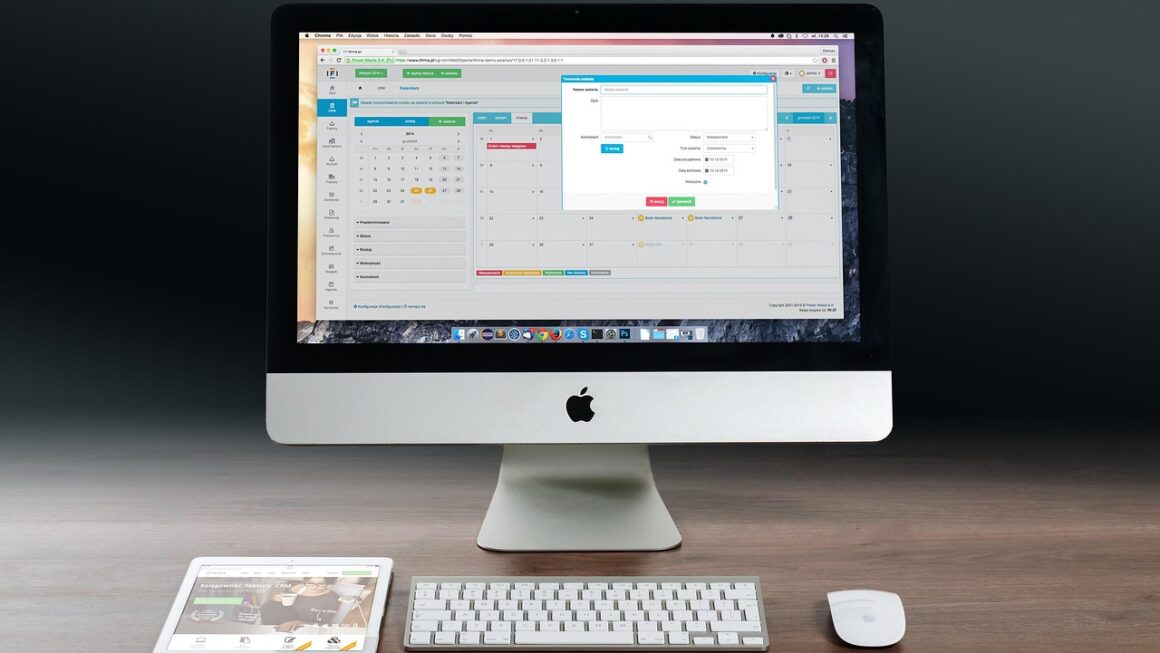In today’s fast-paced work environment, seamless team communication is the cornerstone of productivity and success. Gone are the days of relying solely on email chains and sporadic phone calls. Team communication apps have revolutionized the way we collaborate, offering a centralized hub for instant messaging, file sharing, video conferencing, and project management. Choosing the right app can significantly boost team efficiency, improve morale, and streamline workflows. This post dives deep into the world of team communication apps, exploring their benefits, key features, and offering guidance on selecting the perfect solution for your organization.
The Power of Team Communication Apps
Team communication apps are more than just instant messaging platforms; they are comprehensive tools designed to foster collaboration, enhance transparency, and improve overall team performance. Investing in the right communication app can transform how your team operates.
Increased Productivity and Efficiency
- Real-time Communication: Instant messaging allows for immediate responses and quick resolution of issues, reducing delays and bottlenecks.
- Centralized Information: Consolidates conversations, files, and project updates in one accessible location, eliminating the need to search through multiple email threads.
- Task Management Integration: Many apps integrate with project management tools, allowing teams to track progress, assign tasks, and meet deadlines more effectively.
- Reduced Email Overload: By moving internal communications to a dedicated app, teams can significantly reduce the volume of emails, freeing up time and improving focus.
- Example: Imagine a marketing team coordinating a product launch. With a team communication app, they can instantly share campaign updates, collaborate on creative assets, and address urgent issues without the delay of email communication.
Enhanced Collaboration and Teamwork
- Dedicated Channels: Create specific channels for different projects, teams, or topics, ensuring that conversations are relevant and focused.
- File Sharing: Easily share documents, images, and other files directly within the app, eliminating the need for external file-sharing services.
- Video Conferencing: Conduct virtual meetings, presentations, and training sessions with built-in video conferencing capabilities.
- Collaborative Document Editing: Some apps offer real-time document editing, allowing multiple team members to work on the same document simultaneously.
- Example: A software development team can use a dedicated channel to discuss bug fixes, share code snippets, and collaborate on new features in real-time.
Improved Employee Morale and Engagement
- Enhanced Transparency: Open communication channels foster a sense of transparency and trust within the team.
- Informal Communication: Apps often provide a space for informal chats and social interactions, helping to build camaraderie and strengthen relationships.
- Recognition and Appreciation: Publicly acknowledge and appreciate team members’ contributions, boosting morale and motivation.
- Remote Work Enablement: Facilitates seamless communication and collaboration for remote teams, ensuring that everyone stays connected and informed.
- Example: A company can use a team communication app to create a virtual water cooler where employees can share updates, celebrate successes, and build relationships outside of formal work settings.
Key Features to Look For in a Team Communication App
Selecting the right team communication app requires careful consideration of your organization’s specific needs and requirements. Not all apps are created equal, and understanding the key features is crucial for making an informed decision.
Messaging and Communication
- Direct Messaging: Enables private conversations between individual team members.
- Channel-Based Communication: Organizes conversations into dedicated channels for different projects, teams, or topics.
- Threaded Conversations: Allows for organized discussions within channels, making it easier to follow and respond to specific topics.
- Search Functionality: Provides powerful search capabilities to quickly find messages, files, and information within the app.
- Notifications and Alerts: Customizable notifications ensure that users are alerted to important messages and updates.
- Rich Text Formatting: Supports formatting options such as bold, italics, and bullet points to enhance message clarity.
- Example: A project manager can use direct messaging to provide individual feedback to team members while using channels to share overall project updates and milestones.
File Sharing and Collaboration
- File Storage and Sharing: Securely store and share documents, images, and other files within the app.
- Version Control: Tracks different versions of files, ensuring that users are always working on the latest version.
- Integration with Cloud Storage Services: Integrates with popular cloud storage services such as Google Drive, Dropbox, and OneDrive.
- Collaborative Document Editing: Allows multiple users to edit documents simultaneously in real-time.
- Screen Sharing: Enables users to share their screens during video conferences and presentations.
- Example: A design team can share mockups and design files within a channel, solicit feedback, and track revisions using version control.
Video Conferencing and Meetings
- High-Quality Video and Audio: Provides clear and reliable video and audio for virtual meetings and presentations.
- Screen Sharing: Enables users to share their screens during video conferences and presentations.
- Recording Capabilities: Allows users to record meetings for future reference or for those who were unable to attend.
- Virtual Backgrounds: Offers virtual background options to enhance privacy and professionalism.
- Meeting Scheduling and Reminders: Integrates with calendar apps to schedule meetings and send reminders to participants.
- Example: A sales team can use video conferencing to conduct virtual product demos for potential clients.
Integrations and Customization
- Integration with Project Management Tools: Integrates with popular project management tools such as Asana, Trello, and Jira.
- Integration with CRM Systems: Integrates with CRM systems such as Salesforce and HubSpot to streamline communication and data sharing.
- API Access: Provides API access to allow for custom integrations and development.
- Customizable Notifications: Allows users to customize notification settings to reduce distractions and focus on important alerts.
- Themes and Branding: Offers options to customize the app’s appearance with company branding.
- Example:* A customer support team can integrate their team communication app with their CRM system to quickly access customer information and provide personalized support.
Popular Team Communication Apps: A Comparison
The market offers a wide array of team communication apps, each with its unique strengths and weaknesses. Here’s a brief comparison of some of the most popular options:
Slack
- Strengths: Widely adopted, extensive integration library, robust search functionality, user-friendly interface.
- Weaknesses: Can be expensive for larger teams, message history limitations on free plan.
Slack remains a dominant player, known for its user-friendly interface and extensive integrations. It’s a great option for teams of all sizes, especially those that rely heavily on third-party apps.
Microsoft Teams
- Strengths: Integrated with Microsoft 365, robust collaboration features, strong security.
- Weaknesses: Can be overwhelming for new users, tight integration with Microsoft ecosystem may be a limitation for some.
Microsoft Teams is a powerful option for organizations that already use Microsoft 365. Its tight integration with other Microsoft products makes it a seamless solution for collaboration and communication.
Google Chat
- Strengths: Integrated with Google Workspace, simple and intuitive interface, free for Google Workspace users.
- Weaknesses: Fewer integrations compared to Slack, lacks some advanced features.
Google Chat is a solid option for teams that heavily rely on Google Workspace. Its simplicity and seamless integration make it easy to use and implement.
Discord
- Strengths: Excellent voice and video communication, strong community features, free for basic use.
- Weaknesses: Primarily designed for gaming communities, may not be suitable for all professional environments.
While originally designed for gamers, Discord has gained traction in other industries due to its excellent voice and video communication features. It’s a great option for teams that need to communicate frequently in real-time.
Choosing the Right App
Consider your team’s size, budget, specific needs, and existing software ecosystem when making your decision. Don’t hesitate to try out free trials of different apps to see which one best fits your organization’s requirements.
Implementing a Team Communication App: Best Practices
Successfully implementing a team communication app requires careful planning and execution. Here are some best practices to ensure a smooth transition and maximize adoption:
Planning and Preparation
- Identify Needs and Requirements: Clearly define your team’s communication needs and identify the key features that are essential for your organization.
- Select the Right App: Choose an app that aligns with your team’s needs, budget, and technical capabilities.
- Develop a Communication Strategy: Create a clear communication strategy that outlines how the app will be used, what types of communication are appropriate, and the expected response times.
- Train Your Team: Provide comprehensive training to ensure that everyone understands how to use the app effectively.
Rollout and Adoption
- Start with a Pilot Group: Roll out the app to a small pilot group first to gather feedback and identify any potential issues.
- Promote the App: Clearly communicate the benefits of using the app and encourage team members to adopt it.
- Lead by Example: Leaders should actively use the app to communicate with their teams and demonstrate its value.
- Provide Ongoing Support: Offer ongoing support and resources to help team members troubleshoot issues and learn new features.
Ongoing Management and Optimization
- Monitor Usage and Engagement: Track usage and engagement metrics to identify areas for improvement.
- Gather Feedback Regularly: Solicit feedback from team members on a regular basis to understand their experiences and identify areas for optimization.
- Update and Refine Your Communication Strategy: Regularly review and update your communication strategy based on feedback and changing needs.
- Stay Up-to-Date with New Features: Stay informed about new features and updates to the app and communicate them to your team.
Conclusion
In today’s collaborative work landscape, team communication apps are essential tools for boosting productivity, enhancing teamwork, and improving employee morale. By carefully evaluating your organization’s needs, exploring available options, and implementing a well-defined communication strategy, you can leverage the power of these apps to transform the way your team operates. Remember that the right app is not just a platform; it’s an investment in your team’s success and future growth. Choose wisely, implement strategically, and watch your team thrive.




